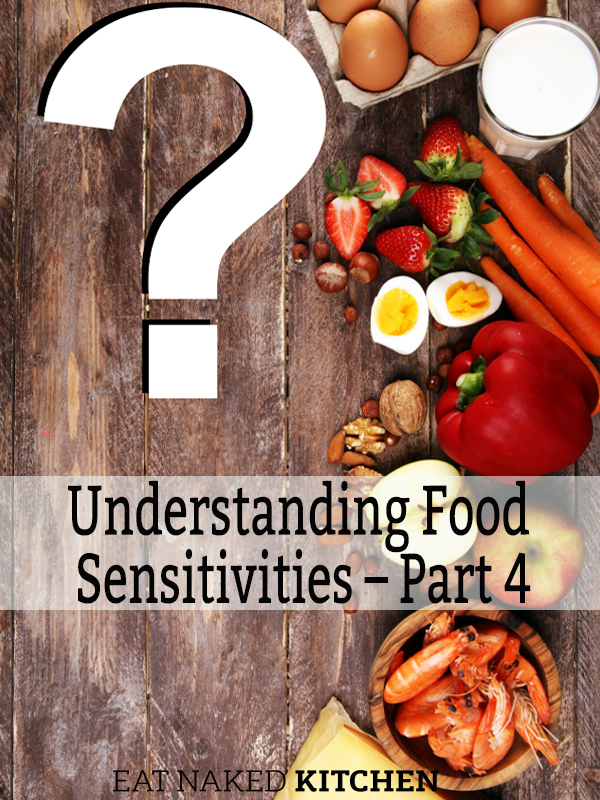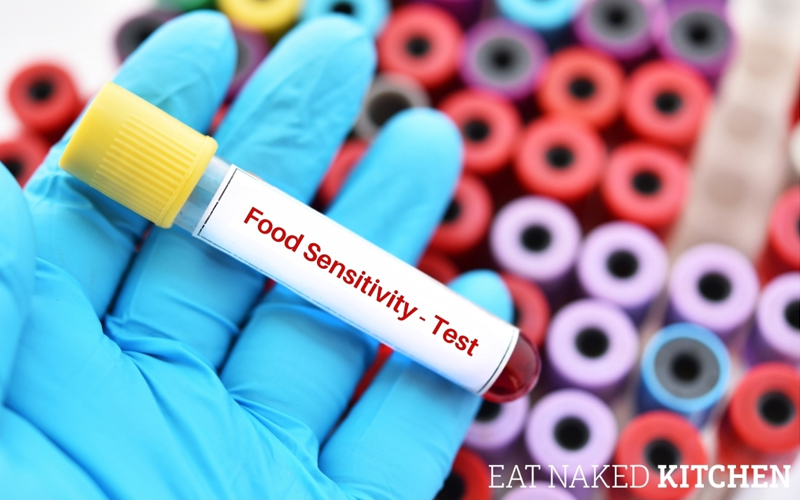Despite this very positive experience, for many years I was strongly averse to using food sensitivity testing in my practice, and actually developed quite a disdain for it. I have only recently come back to this work, after years of resisting it. Why the apparent contradiction?
Well, part of the problem was with the testing itself. In part 3, I talked about food sensitivity testing and the complexities that make it so difficult to get an accurate and comprehensive test result. But there’s another part to this story and it has to do with healing. After all, finding out what foods you’re sensitive to is only the first step in the process. And while eliminating them is step 2, I’ve learned there’s more to the story.
The trouble with relying exclusively on food sensitivities
Over the years in my practice I had client after client who came to me after doing food sensitivity testing with previous practitioners. Many of them spent a lot of money on expensive tests, got a long list of foods they were told not to eat, and diligently eliminated these foods from their diet. They did feel great for the first little while – usually for several months – and then slowly all the symptoms that had disappeared started to manifest again. So they went back to their practitioners, got retested, and discovered they’d developed a whole new set of sensitivities. Their ever-decreasing list of permissible foods was both depressing and ultimately unrealistic.
I saw many cases like this and shared in my clients’ frustration and deep discouragement. From my training, I knew how critically important gut healing is for preventing food sensitivities from developing in the first place (see part 2 for more information on this process). You see, if we simply remove the trigger foods from the diet, we’re alleviating the damage in the short term, but we’re not actually getting to the root of the problem, which lies in the digestive process: why is improperly digested food getting into the blood in the first place?
And so that was the approach I took: forget testing for food sensitivities, just heal the gut.
I had great results with this in many cases, but there were those stubborn cases that troubled me. I had clients who were extremely compliant and on protocols that should have been creating vast improvements in their health, but weren’t. These cases haunted me over the years. It didn’t make sense why we weren’t seeing better results, especially when it seemed like the clients were doing all the right things.
I saw this in my own health, too. Migraines were my chronic issue, and while they ebbed and flowed for me, I never was able to rid myself of them completely despite how pristine my diet or apparently healed my gut (I say “apparently” because there were issues with my digestion about which I was unaware at the time). I was frustrated and often felt like a failure as a practitioner for not being able to figure this out. I resigned myself to living with migraines, making peace with them, and compiling an army of natural tools to ease the pain when they took me down.
And then food sensitivity testing re-entered the picture.

Under the guidance of one of the most seasoned and successful NTPs in the country, I opened my mind to food sensitivity testing, but only in conjunction with deep digestive testing and healing.
All I can say is WOW.
When paired with gut healing, removing food sensitivities can be a powerful and integral part of the healing process. Alone, both of these strategies – gut healing and removing food sensitivities – are moderately effective. Together, they are far more than the sum of their parts. The results were tremendous and life-changing.
In short: I no longer have migraines.
As someone who has struggled with them since my early teens and who comes from a long family lineage of migraine sufferers, I had resigned myself that this was just my lot. No longer. I simply cannot tell you how freeing this is.
The two-pronged approach to healing food sensitivities
Using this two-pronged approach – deep gut healing with the temporary elimination of food sensitivities from the diet – I was also able to resolve mysterious and chronic issues that my daughter and husband were having. Now completely convinced, I incorporated this approach into my practice and am continuing to see incredible results.
Why is this approach to healing so successful?
Well, working with food sensitivities is an important part of the puzzle, but not the whole picture. This is because removing foods from the diet doesn’t actually get to the root of the problem: gut healing. More often than not, new sensitivities will develop and all that happens is a diminished list of foods the body can handle. No bueno.
At the same time, gut-healing alone without identifying and removing food sensitivities is often ineffective because those foods are causing inflammation. Here’s the analogy I like to use:
Imagine you have a big scrape along your arm. You do all sorts of wonderful healing things – some nice healing balms, aloe, maybe some lavender oil – and are working hard to heal the wound. But then every single day you walk alongside a brick wall and scrape your arm against it. At best this scraping would slow your healing; at worst, it would exacerbate the problem and make the wound even more irritated and inflamed.
Food sensitivities are like the brick wall: exceedingly irritating to the very lining of the gut you’re trying to heal. Unless you remove them while you do the healing work, you are at best slowing down your progress, and at worse exacerbating the problem the whole time.
In some cases, the very healing foods you’re eating can be sensitivities! I was sensitive to cabbage, among other things. The copious amounts of homemade sauerkraut I was eating was actually working against me, even though for most people it’s an important part of the healing process.
The 4-step process for healing food sensitivities
Here is my 4-step process for healing food sensitivities and simultaneously laying the foundation for some true healing in many other areas of your body:
- Identify food sensitivities using the tests I described in Part 3.
- Determine the health and function of your digestive system. How well is it working? Are there factors such as parasites, fungal overgrowth, or imbalances in your microbiota that are blocking your body’s ability to heal? Specific GI tests can provide this information.
- Heal the gut, while eliminating food triggers. This is work you’ll need to do under the guidance of a qualified practitioner – for true healing you need to be very specific and targeted – generic protocols just don’t cut it.
- Reintroduce foods 3-6 months after your symptoms have abated, progressing very slowly to ensure each food is no longer a trigger for you.
Now, this process is very technical and really something that you’ll need to work through under the guidance of a qualified health practitioner. I wish I could say it’s a DIY protocol – but the testing involved, the interpretation of those tests, and the development of a healing protocol both from a dietary and supplement perspective are too technical unless you’ve been specifically trained.
The good news is a whole pool of practitioners are being trained to work with exactly this protocol. If you’d like to find someone to work with, please email us at: hello (at) eatnakedkitchen (dot) com and we’ll help you find a practitioner who’s the right fit.
I hope this series has helped to demystify and clear up some of the confusion around working with food sensitivities. If you have more questions I haven’t answered, please post them in the comments below and I’ll be sure to answer them, either here or in a future post!




Thank you for this very comprehensive series on food sensitivities. I have had an increasing number of food sensitivities over the years, and after much research and experimentation, and working with a dietician and naturopath, found that what is needed is basically what you had outlined here! I found out about MRT just last year, and found the information invaluable for myself and my 2year old daughter. It helped us make some dietary adjustments that very quickly made a significant difference to our health (her persistent eczema cleared up within days, for example), and it was very empowering to know exactly what was triggering our symptoms, rather than just trying to guess. And, as you found, some surprising and healthy foods were problems for me too, and didn’t fit the classic list of foods to avoid – things like lettuce, apples, coconut oil.
The one thing I would add is a therapy I came across this year which works wonderfully in combination with avoiding triggers and gut healing. It’s NAET (Nambudripad’s Allergy Elimination Technique), which uses a combination of kinesiology, acupressure and acupuncture to resolve food and environmental sensitivites and allergies. The way I understand it, is it helps settle down the overactive immune response by looking at the nervous system/immune system connection. This is the element that was missing for me. I found simply eliminating trigger foods for months and gut healing improved my symptoms somewhat, but didn’t completely resolve it for me. And continuing to avoid those foods wasn’t sustainable, because there were so many, and included foods that are important for healing (like fermented foods). NAET has made the most incredible difference, and is allowing me to now eat foods that I wasn’t able to before without any problems at all. And I feel healthy again. Highly recommended!
Landed her after seeing a comment on Myles & Tessa’s site. Very interesting information on your site. I also appreciated Ivana’s comment. This is a very intriguing topic. I certainly understand how you were inspired to pursue a career in nutrition after embarking on your road to discovery. Western medicine isn’t helping people when it comes to digestive issues & food sensitivities, and I haven’t seen any NDs connect all of the dots either. It’s an interesting web of confusion that is impacting a great many people. Keep up the good work, Margaret. I look forward to reading more.
Thanks, Sherry!
Do you find it necessary to eliminate all the foods from the testing including the low level sensitivity foods or just the medium to high sensitivity foods?
I usually just eliminate the medium to high sensitivity foods. But always with gut healing concurrently. Usually within 3-6 months everything has healed up and we’re able to re-introduce foods again.
Thank you for this series as I’ve done several food sensitivity tests with mixed results and also seen the offending foods list change or enlarge over time, even with some gut healing protocol prescribed from a naturopath, such as GI E-cap. Can you share some of your healing protocols that are effective? And really, except for the test results I don’t feel like I have any symptoms of food problems (no skin problems, or headaches, etc.). The silent reflux is pretty tamed after two years as long as I watch my acid intake and keep my stress down. What am I missing?
Hi Janet – I wish I could share a generic protocol that works for everyone, but it depends pretty much entirely on the test results that we get back. I will say that I always include functional support, healing supports, some kind of probiotic, and if there’s a pathogen I always make sure we have an eradication element to the protocol.